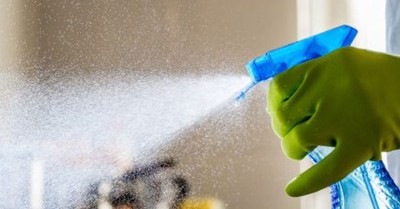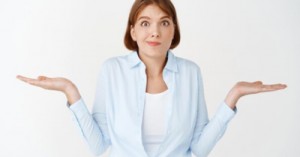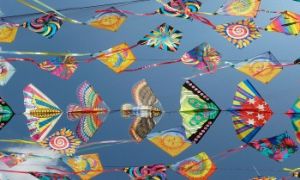The Health and safety of children are among the prime concerns of early childhood services when planning the learning environment. The safest way to combat such issues is to opt for organic formulations which replace harmful chemicals with nature-based ones. The following article provides information on using green cleaning products in an early childhood service.
Understand The Dangers Of Conventional Cleaning Products
- Conventional cleaning products may contain chemicals associated with eye, skin, or respiratory irritation, or other human health issues.
- The concentrated forms of some commercial cleaning products can even create potential handling, storage, and disposal issues for users.
- Many types of chemical cleaning products contain compounds that when washed into rivers and streams pollute the water bodies and harm aquatic life. For example, alkylphenol ethoxylates, a common surfactant ingredient in cleaners, have been shown in laboratory studies to function as an "endocrine disrupter," causing adverse reproductive effects of the types seen in wildlife exposed to polluted waters.
- Many surfactants used in conventional products biodegrade slowly or biodegrade into more toxic, persistent, and bioaccumulative chemicals, threatening aquatic life.
- Volatile organic compounds (VOC) in cleaning products can affect indoor air quality and also contribute to smog formation in outdoor air.
Identify Greener Alternatives
Avoid buying cleaning products that carry the ‘Hazardous’ or ‘Dangerous’ label. Instead use cleaning products that use biobased solvents from citrus, seed, vegetable and pine oils.
A useful way of identifying such products is with eco-labels. However, it is important to be careful in interpreting vague or generic claims on products such as "environmentally friendly" OR "eco-safe”. Check out websites of national or state regulatory bodies which certify products that contain safer ingredients for human health and the environment. Such sites will put out for public access, the stringent requirements that must be met for a product to become certified “green” or “organic”. Also, the website may provide online search tools to help consumers and purchasers find certified brands and products.
Limit the use of disinfectants to areas where people are likely to come into contact with contaminated surfaces such as bathroom fixtures, doorknobs, and other high-touch surfaces. Many general-purpose cleaning tasks do not typically require the use of disinfectants on walls, floors, or other surfaces with minimal hand contact.
Use Safer Options
- Toys Sanitising in Childcare Centre – in sanitizing toys, instead of using commercial sanitiser, you can use soapy water and let it dry out in the sunshine.
- Desks, benches, and diaper stations – clean the surface with warm soapy water. The combination of warm water and soap can get rid of most of the bacteria on any hard surfaces. You may choose from a wide selection of biodegradable detergent that is available on the market.
- Sink and basin – rub it with a damp cloth and bi-carb soda.
- Mirrors and windows – wipe them using a crumpled newspaper or paper towel and vinegar.
- Microwave and Fridges – for cleaning internally, you may use a drop of vanilla essence in water and scrub the dirt and mildew away using a sponge. You can also use a damp cloth with bi-carb soda in cleaning its exterior. To get rid of an unwanted smell by placing a small container of bi-carb soda inside fridges and microwaves.
- Floor – you can use warm water on hard floor surfaces. It can easily remove stains and dirt from the surface.
- Carpet – in cases of stains, you can apply shaving cream to it. You can rinse it off with warm water and leave it to dry.
- Toilet – instead of using your usual potent cleaning agents in cleaning the toilets, you can use white vinegar and add a small essence of lavender as a great way of safe and green cleaning.
- Alternative disinfectant – in the cleaning industry, we are very used to using commercial disinfectants which can be bought on the market. In line with this green cleaning campaign, you can use your concoction.
- You can prepare your mixture by mixing 500 ml of white vinegar with one-litre water; you can also add 15 ml of the essence of your choice. This mixture is best with vomit, urine, and faeces.
- Urine Cleaning – accidents happen every time. For urine accidents, you can wash it off with white vinegar or lemon juice with water and let it dry in the sunshine.
If you decide to follow these suggestions and start mixing your green cleaning products, we highly recommend you check for allergies and sensitivities.
Smells and scents can also be an allergy trigger in children. Make sure that all cleaning agents are stored in a safe place far from the reach of children.
Further Reading
Sustainability Practices In Childcare - his article will provide you with strategies for promoting sustainable education for educators and children and ideas on incorporating sustainable practices within the service.
Green Cleaning in Childcare - The following information provides the Health Hazards Of Chemical Based Cleaning, the Benefits Of Green Cleaning, DIY Cleaning Products and more.
References:
Green Cleaning Strategies For Daycare, Green Cleaning Australia
Resources About Green Cleaning, United States Environmental Agency
Identifying Greener Cleaning Products, United States Environmental Agency







 As an Educator in Australia, your pay rate falls under the Children’s Services Award 2010. This award states the minimum amount that an employer can
As an Educator in Australia, your pay rate falls under the Children’s Services Award 2010. This award states the minimum amount that an employer can When working as a qualified Early Childhood Teacher (with a university degree) within a service, your rate of pay will come from the Educational Services
When working as a qualified Early Childhood Teacher (with a university degree) within a service, your rate of pay will come from the Educational Services When working as a Diploma Qualified Educator your pay rate is from the Children's Services Award 2010. This Award states your minimum rate of pay
When working as a Diploma Qualified Educator your pay rate is from the Children's Services Award 2010. This Award states your minimum rate of pay When working as a Cert 3 Qualified Educator, your pay rate is from the Children's Services Award 2010. This Award states your minimum rate of
When working as a Cert 3 Qualified Educator, your pay rate is from the Children's Services Award 2010. This Award states your minimum rate of Educational Leaders play a crucial role in their early childhood service by ensuring that the educational program aligns with best practices and supports the holistic
Educational Leaders play a crucial role in their early childhood service by ensuring that the educational program aligns with best practices and supports the holistic In early childhood education and care, ratios are more than a technicality—they are a frontline safeguard. Every child deserves responsive supervision, emotional connection, and developmental
In early childhood education and care, ratios are more than a technicality—they are a frontline safeguard. Every child deserves responsive supervision, emotional connection, and developmental With the new national child safety reforms kicking in on 1 September 2025, early childhood services like yours have a real opportunity to lead the
With the new national child safety reforms kicking in on 1 September 2025, early childhood services like yours have a real opportunity to lead the Here’s a comprehensive Mobile Phone and Smart Watch Policy tailored for early childhood education and care (ECEC) services in Australia, aligned with the latest 2025
Here’s a comprehensive Mobile Phone and Smart Watch Policy tailored for early childhood education and care (ECEC) services in Australia, aligned with the latest 2025 The Sea of Fish Challenge is a national initiative that invites children, educators, families, and communities to create and display fish artworks as a symbol
The Sea of Fish Challenge is a national initiative that invites children, educators, families, and communities to create and display fish artworks as a symbol Across the early childhood education and care sector, educators are sounding the alarm: current staffing ratios are insufficient to deliver safe, meaningful, and developmentally appropriate
Across the early childhood education and care sector, educators are sounding the alarm: current staffing ratios are insufficient to deliver safe, meaningful, and developmentally appropriate


